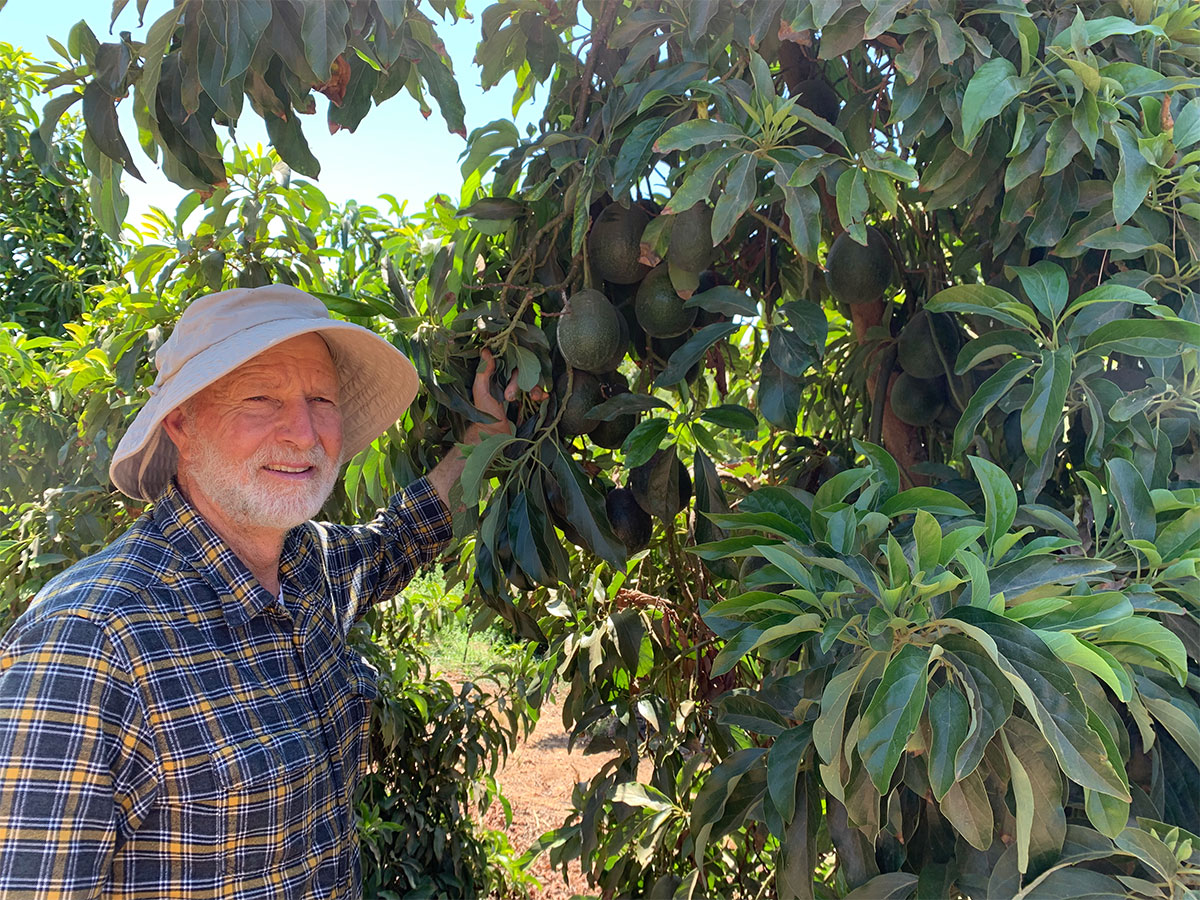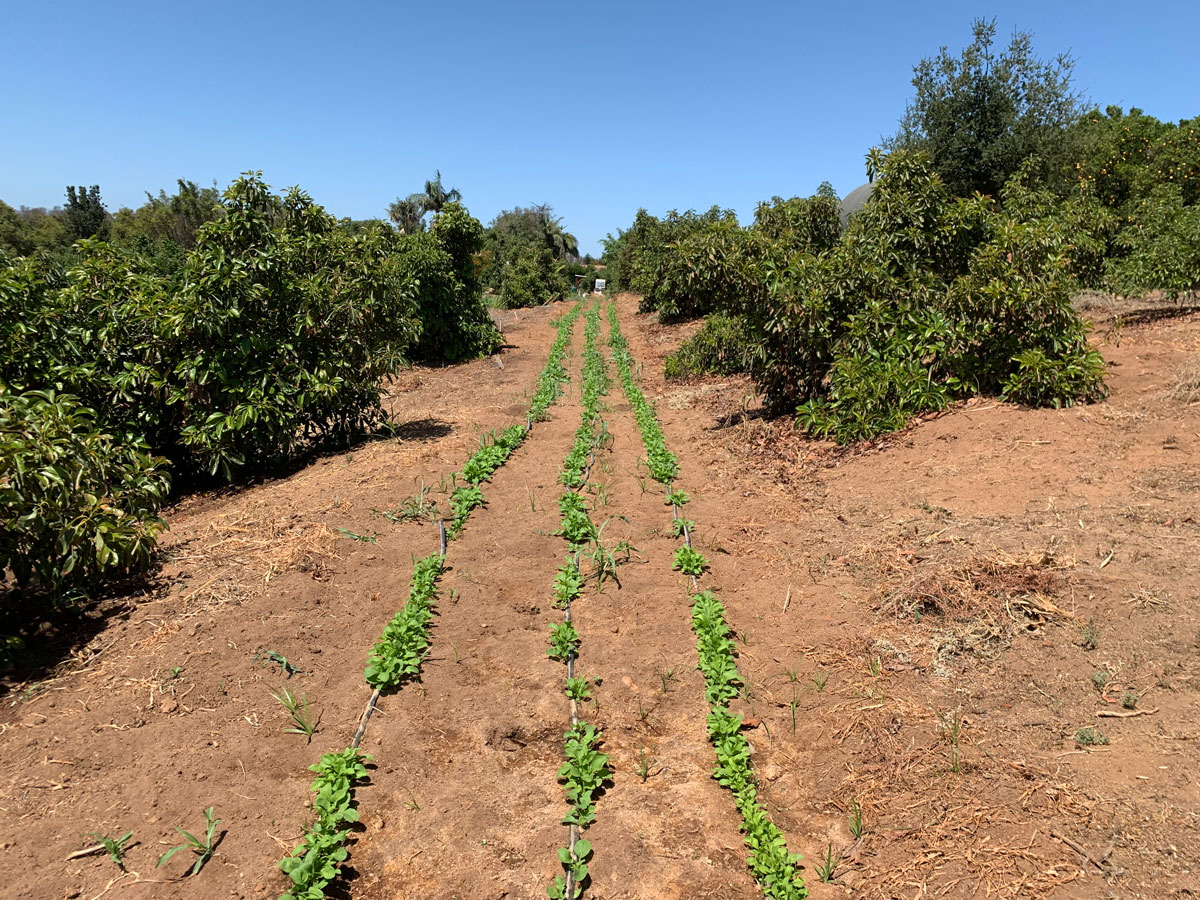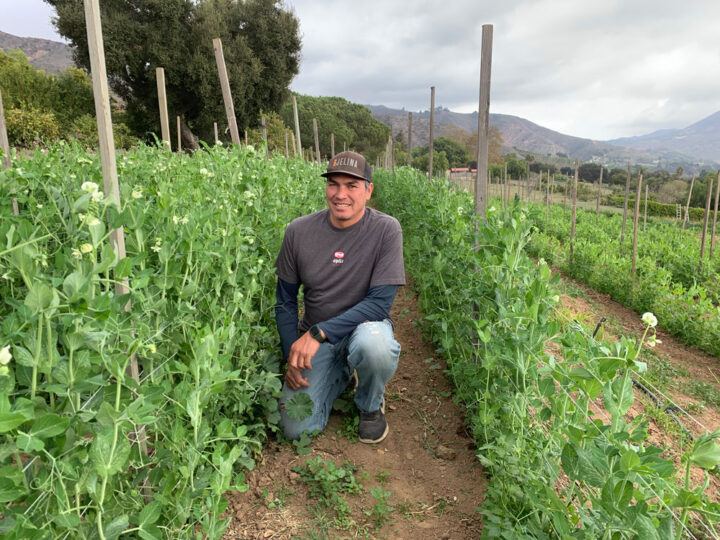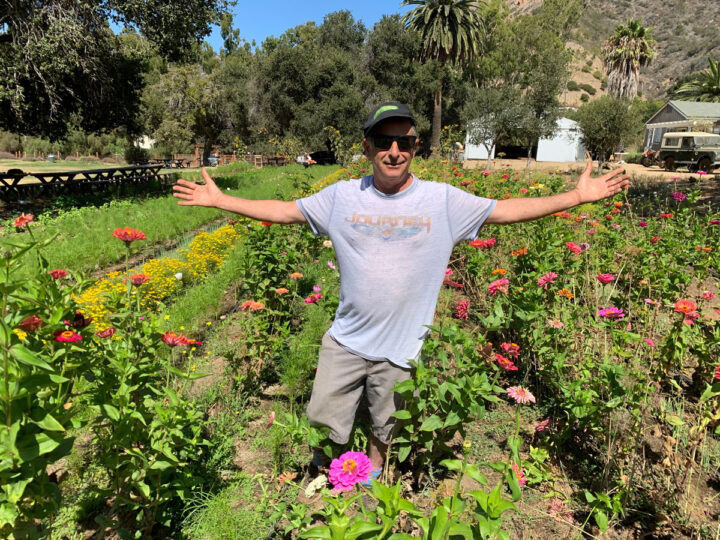Peter Schaner and his son Dominic told me a story that says so much about how small farms and the families who work them shape our relationship to the Earth and the way we eat. We were sitting in the homey living room of the main house on their hilly, 40-acre farm outside Valley Center, CA, the house where Peter and his wife Kayne raised their eight children, and Dominic mentioned that one time they were growing potatoes –
“Onions,” Peter corrected him. “It was onions.” Along with their longtime farmhand, Juan, who is essential to their operation, they had grown a field of onions that had just turned out too small. Peter didn’t want to harvest them if they wouldn’t sell.
“And Dad was thinking, ‘Well, let’s just disc it up,” Dominic continued.
“It cost too much money for labor,” Peter said.
“And Juan was like, ‘No, this is what you have, this is what God gave you, and this is your crop. You have to – “
“It’s our responsibility –“ Peter added.
“Our responsibility to harvest it,’” Dominic said. “And it ended up taking off, because everyone wanted these small onions.”

Peter Schaner with some of his celebrated Reed avocados.
“It’s how I met Suzanne Goin,” Peter said, referring to the James Beard Award-winning chef whose iconic Los Angeles restaurants – with her partner Caroline Styne – now include A.O.C., Caldo Verde, and Hollywood Bowl Food + Wine. She was looking over the Schaner produce at the Santa Monica Farmers’ Market when she spotted the box of small onions he had hidden behind a table and said, “Hey, what are those?”
He was sure she wouldn’t want them, so he tried to put her off. “I didn’t want to be bothered, so I gave her a high price,” Peter said. “She says, ‘Well, can I come over and look at them?’ So, she went over there and looked at them. And she says, “Hey, I’ll take them all. Is it okay if I leave them and then come back?’ Well, she went and I said, ‘Oh, she’s probably not going to come back.’” But she did, and that was the start of a long relationship between grower, chef, and diners, and a clamor for small onions.
Peter smiled: “That goes to show you: God gives you the stuff, but you still have to act on it.”

Later, as Peter and I walk the farm, it’s evident how that sense of responsibility – God gives you the stuff – manifests as incredible flavor in their famous citrus, avocados, eggs and produce. That flavor is the product of attention. The Reed avocados hang thick from the small trees and, as we pass by, he takes off a few that are perfectly ripe, but the rest will come off over a period of months. Sometimes they get so heavy that they break the trees’ branches. He points to ten acres of Valencia oranges, also only partially harvested, and notes that he leaves them on the tree as long as possible to intensify the sweetness. They aren’t all harvested at once, like a commercial operation. Each tree is groomed over and over by hand.
As we descend the hill, we pass small groves of trees, each variety planted according to the temperature gradient as we move from the heat at the top of the hill to the cool of the creek bed at the bottom, which can sometimes get a hard frost. There are limes (most sensitive to cold), two types of Satsumas and four other tangerine varieties, clementines, lemons and Meyer lemons, oro blancos and others I probably didn’t see. The peels and pulp left over from juicing lay piled under the trees as a natural fertilizer and mulch.
Their operation is super-diverse, intensively farmed, and built on hand work. In between the trees are relatively short rows of arugula, radishes, parsley, carrots, eggplant, leeks – constantly changed. Sage, rosemary and other kitchen essentials grow in a small herb garden. A field of squash and purslane grow in front of the house where his daughter Rose lives with her young family. Down the hill, they grow pomegranates and grapefruits and kumquats, which can handle the cold, and stone fruit and apples, which need the cold, the chickens and larger fields for corn, tomatoes, garlic and onions.
“Maybe interacting with the land is essential to our human nature. We’re just very lucky to do that here.”
– Amy
All of the children have worked on the farm, and several still do. For Peter, this is generational. His grandfather had 25 acres of citrus and 100,000 chickens in Anaheim, and Peter’s father had seven acres of oranges in Placentia. That wasn’t enough to make it pay for his dad, who also had an auto shop, but they had 13 children, and those oranges were how his folks kept everyone out of trouble and bonded as a family. Even uncles and aunts would send their kids over to work.
Peter and Kayne’s son Paul left to study Wildlife Management at Montana State University in Bozeman, but he came back to lend his talents and knowledge in caring for the animals, the land, and the environment. Dominic, his wife Amy, and their three kids just moved back to the farm from Northern California, partly to find that sense of purpose and togetherness.
“Me and my siblings – I’m the oldest of eight – we’re all really different, but there’s always this pull back here,” Dominic said. He loves the freedom to pursue individual projects; for instance, he’s learning to grow dragon fruit. Rose grows edible flowers. A couple of the other kids raise emus for eggs in pens at the bottom of the hill. “The work’s never done, so it takes sacrifice, but you’re working towards something together, so it builds community.
“This thing’s going and nature and God and creation is happening, and you’re along with it,” he continued. “It’s not like you’re the one that’s making it happen, or if you weren’t there, everything would just stop. So it’s this cool partnership.”
Amy studied some of Thomas Jefferson’s writing in her Master’s degree research, and noted that he wrote about the beauty and necessity of physical work. “We’re so privileged now,” she added. “None of us have to farm anymore, really. Machines can farm. But maybe interacting with the land is essential to our human nature. We’re just very lucky to do that here.”

Despite the fact that his own father’s farm didn’t make money, Peter went to Cal Poly San Luis Obispo in the late 1970s, earned degrees in Agriculture and Biology, and went straight into farming. This coincided with the emergence of farmers’ markets in Southern California; suddenly, he could find prices far better than his folks had ever received for their oranges. The Wednesday Santa Monica Farmers’ Market started in 1981, and Schaner Family Farms has been a stalwart there for decades.
“The state started the farmer’s market program because the small, family farm was becoming extinct. They were getting out of the business,” said Peter. “So I started going to farmer’s markets right out of college, and we were able to farm on a small, family scale.”
By the time he went into farming, his father’s orchards in Placentia had been replaced by houses and development. Peter looked further south and he and Kayne bought their Valley Center farm in 1984. It had been owned by a cabinet maker who had something like 90 different varieties of trees on it – a great start for the diversity needed at farmers’ markets.
But as more and more non-farmers move into the area, the municipal water has become too expensive. Farmers all around him are removing their fruit and avocado trees because the water prices make them unprofitable. Peter is lucky to have a couple wells on his place, but the challenges are there every day.

Growing arugula between the avocado trees to make the most of the available land.
Here and there around the property are avocado trees that were stumped in order to survive recent droughts. Peter explains that watering trees really means putting water into the leaves, so cutting it off at the stump stops it from transpiring and can help it survive without any water for three or four months. They grow back, but you can only do that a couple times. Everything he grows, and where he grows it on the property, is calculated to maximize the limited amount of available water.
He also credits that mineral-rich well-water for the great taste of his fruit and produce. But the reality is that, without it, this place goes back to being desert or oak savannah. The populated hills all around Schaner Family Farms are dry and dusty, a late-summer brown.
When we stop to look at some potted trees Peter’s going to plant during the winter, he points across the valley, where his uncle has 1000 acres. It used to be all green with avocado and citrus, but now 600 acres of it are empty and brown. Much of the municipal water that is available here was brought down in massive aquaduct projects from Northern California explicitly for agriculture, but now farmers can’t afford it. Farmers love to farm, but you can’t ask them to lose money year over year.
Peter is still making it pay and he has plans for the near future – planting trees in a rocky field, which trees love; removing trees from a less-rocky field in order to grow more vegetables. He’s got grandkids on the farm now and he can’t stop. He does hope for some political help with the price of water but he’s going to keep right on.
“They’re telling you in LA to plant a tree, plant a tree, plant a tree. That’s what farmers do here. We plant trees,” Peter said. “An avocado grove is basically a carbon digester. And yet this is what happens to it. So why can’t everybody subsidize the water costs? Give the farmer some type of assistance or incentive to keep doing foolish things – that’s what farmers do. We’re fools. And everybody’s going to benefit from it.”
— Dean Kuipers


